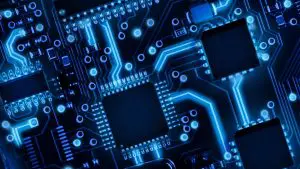Introduction The electronic industry requires increased forced-air cooling limits to cool high-end server CPUs adequately. Improving air-cooled heat sink thermal performance is one of the critical areas for increasing the overall air-cooling limit. One of the challenging aspects for improving heat sink performance is the effective utilization of relatively large air-cooled fin … [Read more...]
Use Of Heat Pipe Cooling Systems In The Electronics Industry
Introduction Thermal management of electronic components must solve problems connected with the limitations on the maximum chip temperature and with the requirements on the level of temperature uniformity. To cool electronic components, one can use air and liquid coolers as well as coolers constructed on the principle of the phase change heat transfer in closed space; i.e., … [Read more...]
An Introduction to Pulsating Heat Pipes
Modern electronics thermal management faces considerable challenges in the wake of component miniaturization, which has led to higher demands on net heat flux dissipation. With the industry closely following Moore's Law, the future demands are becoming increasingly more challenging [1]. Two-phase passive devices are proven present day solutions. Conventional heat pipe … [Read more...]
Electroosmotic Microchannel Cooling System for Microprocessors
Computer heat sinks, such as fin arrays and heat pipes, are much larger than silicon chips and are continuing to grow in size. This trend is driven by the increasing chip heat generation rates and has serious implications for overall system performance. The large volume of existing heat sinks causes discrete memory, video, and power-delivery components to be crowded away from … [Read more...]
Thermal management of highly integrated electronic packages in avionics applications
The packaging and thermal management of electronic equipment has become an important issue because of increased power levels and the simultaneous miniaturization of the devices. With the advent of denser device packaging and faster intrinsic speeds, cost, reliability and size have been improved, but, unfortunately, packaging and thermal management have not followed at the same … [Read more...]










